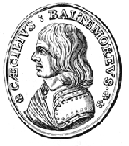|
LIBRARY ACCESSIONS
Blackistone, Mick.
Dancing with the Tide: Watermen of the Chesapeake
Booth, G. W.
Maryland Boy in Lee's Army: Personal Reminiscences of a
Maryland Soldier in the War
Between the States, 1861 - 1865
Bourne, Michael Owen.
Historic Houses of Kent County: An Architectural
History, 1642 - 1860
Bourne, Michael and James J. Berna.
History of Airy Hill, Chestertown, Maryland, (1688 -
1996)
Chapelle, Howard I.
Notes on Chesapeake Bay Skipjacks
Chappell, Helen.
Chesapeake Book of the Dead: Tombstones, Epitaphs,
Reflections and Oddments of the
Region
Clark-Lewis, Elizabeth.
First Freed: Washington, DC in the Emancipation Era
Cuttler, Dona L., compl.
Montgomery Circuit records, 1788 - 1988, Methodist
Episcopal, Methodist
Episcopal South and United Methodist
Cuttler, Dona L. and Dorothy J. Elgin.
History of Poolesville
Danson, Edwin.
Drawing the Line: How Mason and Dixon Surveyed the Most
Famous Border in
America
Echenbarger, William.
Walkin' the Line: A Journey from Past to Present Along
the Mason-Dixon
Elfenbein, Jessica I.
Making of a Modern City: Philanthropy, Civic Culture,
and the Baltimore YMCA
Feldstein, Albert L.
Feldstein's Historic Coal Mining and Railroads of
Allegany County, Maryland
Fish, Peter Graham.
Federal Justice in the Mid-Atlantic South: United
States Courts from Maryland to
the Carolinas, 1789 - 1835
Fogle, Patricia A.
Frederick County, Maryland, Church and Cemetery
Records, vol. 4
Fuller, Marsha Lynne.
St. Mary's Catholic Church Records: 1818 - 1900,
Hagerstown, Washington
County, Maryland
|
|










